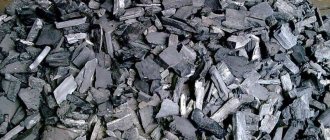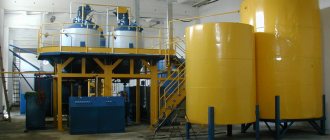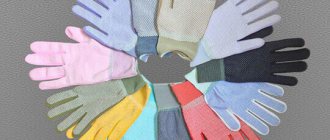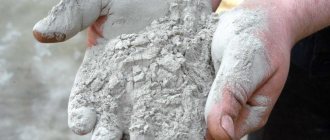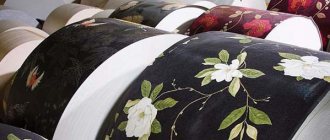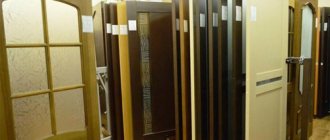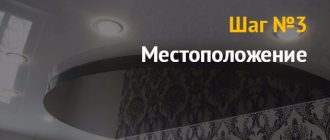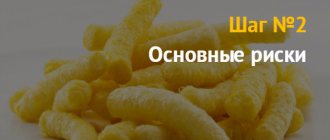Relevance and business prospects
New discoveries and rapid technological development have not bypassed the construction sector. Conventional materials and technologies are being replaced by new, improved developments. In recent years, composite materials have become increasingly important. For example, iron reinforcement is being replaced by basalt and fiberglass structures.
Composite reinforcement has a number of advantages:
- durability due to resistance to corrosion, unlike iron counterparts;
- long service life (warranty is 80-100 years);
- strength;
- low specific gravity: 4 times lighter than steel reinforcement;
- dielectricity;
- radio transparency;
- ease of transportation;
- relatively low cost.
According to experts, in 10-15 years, composite reinforcement will replace iron reinforcement.
Characteristics and scope
Technologies for the production of composite materials are more accessible and simple. The most common types of composite reinforcement:
- Fiberglass - a bundle of continuous glass fibers with spiral transverse corrugation, bonded together with synthetic resin.
- Basalt is a load-bearing rod with continuous spiral-shaped ribs produced by wrapping a basalt rope.
- Basalt-plastic is a material based on basalt fibers and an organic binder.
- Carbon fiber reinforcement – reinforcement made from carbon fibers.
Let's consider the principles of production of the first two types. The scope of application of such fittings is wide:
- construction of concrete structures for civil or industrial facilities;
- construction of the roadway;
- all types of foundations, floors;
- installation of reclamation systems, drainage systems, sewerage systems.
- for fastening thermal insulation;
- construction of brick surfaces using layered masonry.
Production technology
Despite many advantages, the production of composite reinforcement is a material-intensive process. It consists of a number of stages. First, the fibers are dipped into a polymer resin, which hardens the material. This is how roving is obtained. It is directed into a speciation-forming, high-strength mold, through which a rod of the required size is formed. The starting material undergoes a polymerization stage, heated to specified temperatures. To add ribbing, the profile is attached. The base with the wound profile is sent to the drying room, in which partial polymerization of the resin is performed. In another section of the drying room, an unwinding device removes the relief-forming wire from the base. The resulting rod is stretched to the specified parameters and cut into equal parts using a saw, folding it in a place for finished products.
Equipment for the production of fiberglass reinforcement Lite package
The cost of this configuration is 699,000 rubles.
Allows the serial production of fiberglass and basalt-plastic reinforcement in accordance with GOST 31938-2012 with a sand coating, as well as composite flexible connections in accordance with GOST R 54923-2012, used to connect the load-bearing and facing layers of multi-layer enclosing structures made of piece materials. A good option for starting production with the possibility of retrofitting into a full-fledged plant for the production of composite materials for construction. By purchasing a line, you get the opportunity to produce two products: fittings and flexible connections.
The price includes supervision of installation of equipment at the customer’s premises, commissioning, and training of your staff.
Specifications
- Linear productivity meters/shift (12 hours) 1000-8000
- Productivity of flexible connections pcs/shift (12 hours) up to 20,000
- Energy consumption kW/hour 6-8
- Power supply 380V
- Overall dimensions: – length up to 26,000 mm (depending on the configuration) – width 700 mm – height 1600 mm
- The production defect rate is less than 1%
- Number of service personnel 1 operator
- Required air pressure MPa up to 0.8
- Compressed air consumption l/min, max 300
- Ventilation m3/hour 2000
Peculiarities
– a shaft-type pulling mechanism made of polyurethane provides high pulling characteristics. The guaranteed service life of the polyurethane shaft is 1 year (in round-the-clock operation). Replacement of worn-out traction shafts is carried out within 1 hour.
– three-channel polymerization furnace. The use of imported thermostats from Autonics allows for stepwise heating. The operating temperature of the furnaces is up to 400°C. Heating elements are made of stainless steel, which significantly increases service life and reduces energy consumption.
– the spunbond production method ensures stable quality of the products. Eliminates oversaturation of the reinforcing bar with epoxy-polymer binder, which leads to the formation of smudges, cracks, and a decrease in the number of fibers (according to GOST 31938-2012, the roving content is at least 75%) and also eliminates insufficient impregnation of the reinforcing bar (fragility, longitudinal cracks).
– the heating system for the epoxy-polymer binder in the impregnation bath increases the life time of the finished mixture.
– the roving thread pre-tensioning unit is equipped with an automatic notification system and shutdown of the pulling mechanism when roving thread knots hit.
Delivery contents
- mechanism for catching roving units;
- roving pretensioner;
- roving heating oven with temperature control;
- impregnation bath with binder heating function (adjustable);
- set of dies (Steel 45);
- device for forming a round cross-section of a reinforcing bar for; reinforcement with sand coating (for 4 rods);
- sand application unit;
- 4-channel polymerization oven;
- polymerization furnace control cabinet;
- 4-shaft pulling device;
- pulling device control cabinet;
- finished product meter;
- coil winder (for 4 coils);
The Lite composite rebar production line is ideal for small businesses. If you are opening your factory from scratch, you will need equipment for the production of fiberglass reinforcement: the price for the Lite configuration is lower than for analogues. Purchasing this line will help you reduce start-up costs and optimize the budget of your new venture.
The raw materials for the manufacture of fiberglass reinforcement can be different. The following elements are most often used in the manufacturing process:
- Resins;
- Roving;
- Ethanol;
- Braiding thread;
- Dicyandiamide;
- Acetone.
Particular attention should be paid to the selection of roving (reinforcing material) and resins (binder material). The most popular are fiberglass and basalt plastic roving; sometimes a combined composition is also found. The choice of resin also directly affects the properties of the finished product:
- Organosilicon;
- Epoxy;
- Phenolaldehyde;
- Unlimited.
These resin substances are most popular for making fittings. To save your budget and get high profits, we recommend that you purchase raw materials in large wholesale from manufacturers located closest to your workshop. At the same time, do not try to save on the price of raw materials; remember that low-quality materials produce low-quality products from which you will not earn much.
During the manufacturing process of flexible fittings, many chemical reactions occur, but the production technology itself is not complicated. However, do not think that all equipment is one machine for the production of fiberglass reinforcement; the Lite line includes a set of 13 components.
The production of flexible fittings consists of the following stages:
- Feeding roving to the line;
- Heating of roving;
- Impregnation of roving with resin;
- Formation of a round section;
- Applying sand (optional);
- Polymerization;
- Creating ribbing;
- Pull;
- Cooling;
- Winding into coils.
Mastering the technology from scratch is quite easy even for a non-specialist. When selling equipment and putting it into operation, we make sure to instruct employees of future production.
The Lite composite reinforcement production line cannot be located in any room. The place for its placement must meet certain requirements:
- Sufficient distance from a residential area;
- The height of the ceilings in the workshop is at least two meters;
- The length of the workshop is at least fifteen meters;
- Availability of communications: water supply, electricity, sewerage;
- Availability of powerful ventilation;
- The optimal workshop temperature is 16-18C;
- Availability of rooms for staff and a warehouse for finished products.
We advise you to think about renting premises outside the city. Low rental costs will increase the profitability of the workshop, and a suitable place where production will not disturb residents can be easily found. However, with this option, transportation costs will increase slightly.
A business plan, which reflects the equipment for the production of fiberglass reinforcement, its purchase price and other additional costs, must necessarily include the intended market for the finished product.
Searching for customers and accepting orders should be done at the production planning stage, so that the new Lite composite reinforcement production line does not stand idle, but begins to bring you profit from the first days after purchase.
Your potential clients are:
- Large construction companies in your city;
- Repair and finishing companies;
- Wholesale trade companies in building materials;
- Construction stores, large and small;
- Private individuals (lowest priority).
To increase profits, consider hiring a sales manager and representing your plant on the Internet, and especially on social networks.
Unsold flexible fittings can be stored in a warehouse for as long as desired, waiting for their buyer. Over time, the material does not deteriorate and does not change its properties, which minimizes production costs.
Starting investments for opening your own workshop usually include:
- Cost of flexible fittings line Lite;
- Purchase of raw materials to start work;
- Renting a premises and converting it into a workshop;
- Costs of creating a legal entity;
- Purchase or lease of a fleet of vehicles for product delivery.
Net profit from the production of flexible composite reinforcement per month can reach from 80 to 200 thousand rubles. As the experience of our clients shows, with proper organization of the sales process, the cost of purchasing the line and other costs of organizing production pays off within one and a half to two years after installation of the equipment. Please note that the price of purchasing a finished line is much more favorable than the total cost of purchasing its individual elements.
Selection of premises
The production of fiberglass reinforcement, like basalt, requires a specially equipped room. Its length should be 25-30 meters. It will be convenient to work with high ceilings - from 3 meters. Please note that height fluctuations in the production department should not exceed 5 centimeters.
It is also necessary to take care of a stable temperature regime - 16-20ºС. The room must be well ventilated, the air outflow level must be at least 0.25 m³/min.
When searching for the necessary space, do not forget about a separate warehouse, the dimensions of which will depend on the delivery conditions, ordering and the overall scale of the project.
Preparation of raw materials
For the production of basalt reinforcement or fiberglass base, the following raw materials are used:
- roving (glass roving or basalt);
- binding thread (roving for wrapping);
- synthetic resin;
- dicyandiamide;
- ethyl;
- acetone.
Some companies use a different composition. Sometimes a combined method is used for production - a fiberglass base and basalt ribs.
To bind all the elements, it is customary to use special resins with the addition of polymer. To impart resistance properties, it is recommended to use an epoxyphenol binder, which also increases dielectricity.
Financial business plan
The given data and calculations are approximate and depend on the choice of supplier and the characteristics of the organization. Starting investments:
- purchase of a line for the production of fittings – 1.3 million rubles;
- purchase of working tools – 250 thousand rubles;
- raw material base – 500 thousand rubles;
- installation of machines and other equipment, installation work – 200 thousand rubles;
- staff salaries, delivery, advertising – 250 thousand rubles.
As can be seen from the calculations, 2.5 million rubles are needed to equip the production line and start work.
Main characteristics
Basic characteristics for such equipment include:
- its dimensions (width, length and height);
- characteristics of the polymerization furnace and its constituent elements;
- permissible production diameters;
- binding component options;
- possible production diameters;
- a type of pulling device;
- average line productivity and workpiece drawing speed;
- number of products for possible simultaneous production;
- working capacity;
- energy consumption is minimum and maximum.
When selecting suitable units for the requirements of a particular production, special attention should be paid to the polymerization oven. Its important characteristics:
- type of oven and type of heating elements;
- design features;
- type of heating elements;
- possible temperature during heating (maximum);
- Energy consumption;
- time required to warm up to operating temperature;
- starting energy consumption during warm-up;
- permissible production diameters.
Polymerization oven
Calculation of profitability level
How much reinforcement do you need to produce to reach the break-even point? Let's look at some example calculations:
- production of ASP reinforcement – 2160 m/hour;
- number of working hours per day – 8;
- line load – 50%;
- number of working days per month – 22;
- production per month – 190,080 meters;
- price per 1 meter (wholesale) – 9 rubles;
- approximate income (excluding expenses) – 1,710,720 rubles;
- level of current costs per month – 1,500,000 rubles;
- net profit - 210,720 rubles.
As can be seen from the calculations, the payback period is 12 months.
Pricing and expected profit
The selling price of fittings consists of the cost of the product, VAT and the markup established by the entrepreneur. The size of the markup may vary depending on the market situation. To attract customers, some novice entrepreneurs dump (artificially lower prices), risking legal punishment. The optimal pricing option is to set the average market price for fittings, which can be reduced individually for a wholesale client.
The cost of monthly production of composite reinforcement consists of the following cost items:
- rent + variable rent – 75,000 rubles;
- fiberglass and resins – 600,000 rubles;
- employee salary – 60,000 rubles;
- depreciation charges (estimated period 2 years) – 5000 rubles;
- general production expenses - 80,000 rubles.
The total production cost of 179,520 meters is 820,000 rubles or 967,600 rubles including VAT. It is easy to calculate the cost of 1 meter of reinforcement; taking into account VAT it will be 5.4 rubles.
The market price of 1 meter of composite reinforcement varies from 6 to 10 rubles. Selling products for 8 rubles, the entrepreneur makes a profit of 2.6 rubles from each meter sold. For the month, production profit will be 466,752 rubles.
By setting an average markup, the entrepreneur will know that he can provide customers with an additional discount, reducing the price to 6 rubles. In this situation, the organization will still recoup all costs and make a profit of 107,712 rubles.
Sales of products
The profitability of the project largely depends on the promotion policy. Since storing reinforcement requires large areas, which entails significant costs, it is recommended to find stable sales markets already at the first stage.
Who can be your client:
- Individual developers. This direction is typical for the regional market.
- Small construction companies, construction stores. The advantage is the opportunity to find a network buyer and expand sales markets throughout the country.
- Large construction companies. Pros: stable sales markets, long-term contracts for the supply of fittings.
Download free business plan for the production of basalt and fiberglass reinforcement (.rar file):
Example 1
Certification
The standard registration procedure with the tax authority for the production of composite reinforcement is indispensable. Builders place special demands on products, as they ensure the reliability of the building and the safety of residents. That is why, when selling a non-metallic reinforcing profile, it is necessary to provide the buyer with a quality certificate.
It is possible to obtain a quality certificate in any city by contacting Rostest yourself or using numerous intermediary companies. Service specialists will conduct a series of tests for each diameter produced, the results of which will be reflected in the protocols. During the inspection, specialists are guided by GOST 31938-2012, comparing standard and real test results. If the test results correspond to standard indicators or are within normal limits, a certificate of conformity of the quality of composite reinforcement with the specified GOST is issued. For the entire procedure, the entrepreneur will have to pay approximately 90,000 rubles, but this investment will allow him to work with large construction organizations.
The law allows the production of composite reinforcement according to developed technical conditions (TU 2296-001-76174300-2010). However, many consumers refuse to use the T/U profile, since many commercial companies simply sell a certificate of conformity and do absolutely no testing.
When choosing one of the certification options, an entrepreneur must clearly understand that he is responsible for production, and violation of regulatory indicators can lead to unpleasant consequences, including the destruction of the building and loss of life. To increase consumer loyalty, it is better to take the long route: go through a series of tests and receive an official certificate of conformity.
But before getting to certification, it is necessary to resolve issues with the production premises, equipment, find a reliable supplier of raw materials, establish a sales chain and select personnel. Typically, the entrepreneur reflects the solution to these issues in a business plan, where he also calculates important financial indicators. The business of producing composite reinforcement cannot be reflected in the form of a universal business plan, however, the largest cost items are basically the same for all regions of Russia. They form the amount of initial investment in the project.
